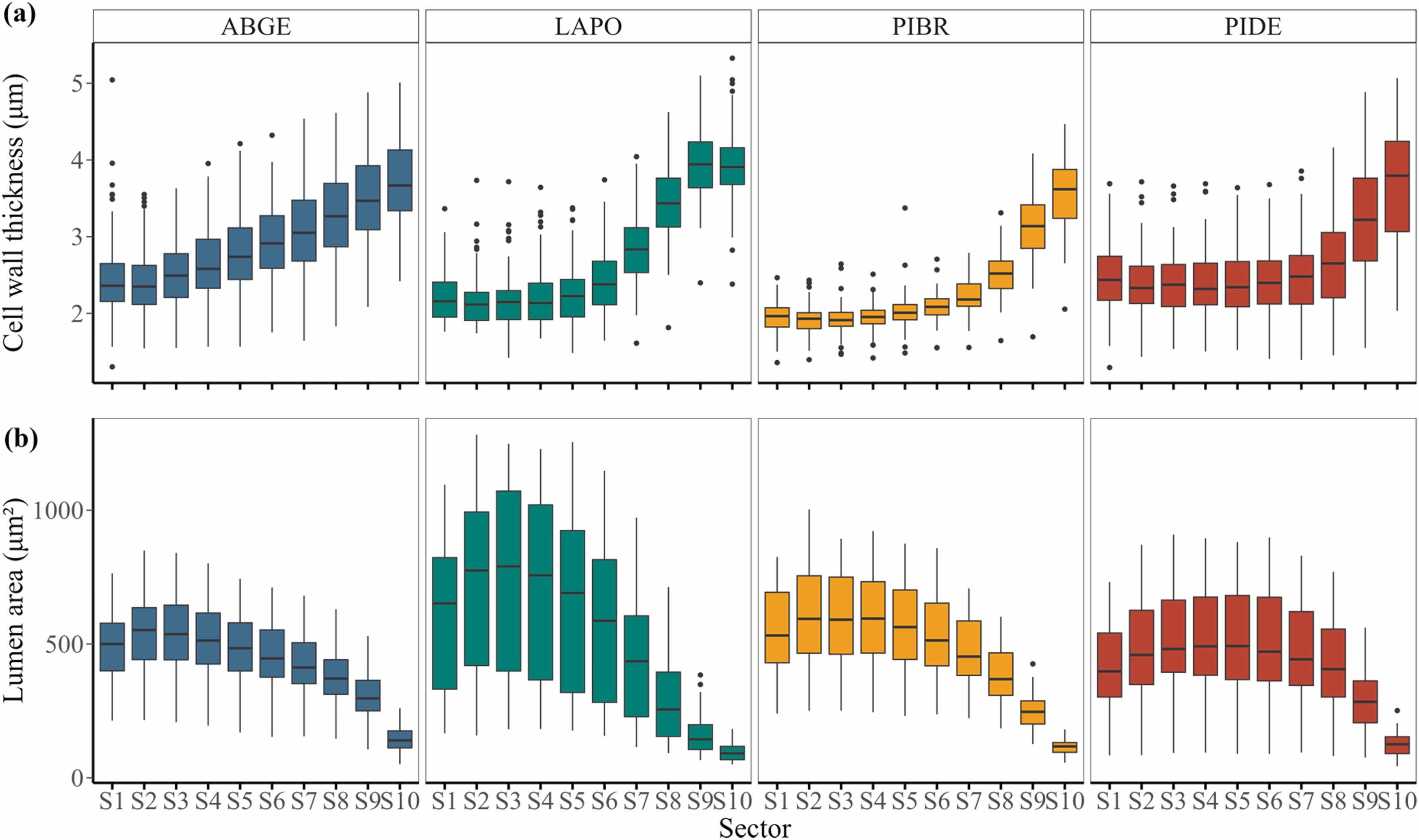Quantitative Wood Anatomy (QWA) provides significant insights into the mechanisms that underpin the responses of tree physiological processes to climate change. However, the influence of climatic factors on the anatomical traits of wood in coniferous tree species in the Hengduan Mountains is still not well understood.
In a study published in Dendrochronologia, researchers from the Xishuangbanna Tropical Botanical Garden (XTBG) of the Chinese Academy of Sciences delved into this issue, offering valuable insights into the impact of climatic factors on cellular wood formation. The study emphasized the susceptibility of subalpine conifers to changing climate patterns and pointed to the necessity for species-specific conservation strategies.
The study was conducted within the subalpine forests of the biologically diverse and climate-sensitive Hengduan Mountains, examining two crucial features of wood cells—cell wall thickness (CWT) and lumen area (LA)—in four dominant species: Abies georgei, Larix potaninii var. macrocarpa, Picea brachytyla, and Pinus densata.
Utilizing sophisticated Quantitative Wood Anatomy (QWA) methods, the researchers constructed chronologies of cell wall thickness and lumen area at both annual and sub-seasonal (intra-annual) scales. The analysis indicated that temperature and moisture conditions during the initial to peak growing season played a pivotal role in wood cell development.
Cell wall thickness was mainly limited by low temperatures. Thicker cell walls, which provide mechanical support, were linked to warmer temperatures. Lumen area, a proxy of hydraulic efficiency for water transport, was largely constrained by moisture availability with larger lumens associated to wetter conditions. The daily maximum temperature had a stronger influence on cell wall thickness and lumen area than precipitation.
The researchers also identified a multi-decadal scale shift, indicating a marked rise in sensitivity to moisture fluctuations in recent decades. This implies an escalating influence of drought stress on hydraulic function as global temperatures increase.
Furthermore, the anatomical traits displayed varying responses to climatic drivers. Both Abies georgei and Pinus densata demonstrated pronounced climatic sensitivity in their anatomical features. In contrast, Larix potaninii var. Macrocarpa and Picea brachytyla exhibited weaker responses, suggesting distinct adaptive strategies to their respective environments.
"Our study addresses a significant gap in dendrochronological studies pertaining to the Hengduan Mountains. The results emphasize the vulnerability of subalpine conifers to climatic fluctuations. It is imperative to develop species-specific conservation approaches," said FAN Zexin of XTBG.

Variation in cell wall thickness (a) and lumen area (b) across ten equal-width sectors in four coniferous species. (Image by XTBG)
Available online: 26 August 2025

